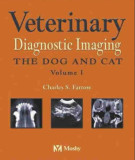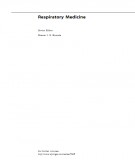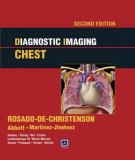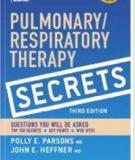
Imaging of airway disease
-
Part 3 book "Veterinary diagnostic imaging, the dog and cat" includes content: Lung edema (pulmonary edema), airway disease, mediastinal disease, disorders of the thoracic esophagus, diaphragmatic hernia, heart and circulatory variations and radiographic disease indicators, cardiac silhouette analysis, angiography and angiocardiography, congenital heart disease, acquired heart disease,....and other contents.
 338p
338p  oursky07
oursky07
 24-10-2023
24-10-2023
 5
5
 4
4
 Download
Download
-
(BQ) Part 1 of the document Diagnostic imaging pediatrics presents the following contents: Acute upper airway obstruction, obstructive sleep apnea, central airway obstruction, congenital lung lesions, neonatal chest issues, mediastinal masses, small airway abnormalities, pediatric interstitial lung diseases, other neonatal gastrointestinal disorders,...
 870p
870p  thangnamvoiva4
thangnamvoiva4
 01-07-2016
01-07-2016
 47
47
 5
5
 Download
Download
-
(BQ) Continued part 1, part 2 of the document Clinically oriented pulmonary imaging presents the following contents: Imaging of pulmonary hypertension, obstructive pulmonary diseases, imaging of airway disease, idiopathic interstitial pneumonias, occupational lung disease, hemoptysis, image guided thoracic interventions,...
 162p
162p  thangnamvoiva4
thangnamvoiva4
 01-07-2016
01-07-2016
 42
42
 3
3
 Download
Download
-
(BQ) Part 1 of the document Diagnostic imaging chest presents the following contents: Overview of chest imaging, developmental abnormalities, airway diseases, infections, pulmonary neoplasms, interstitial, diffuse and inhalational lung disease.
 777p
777p  thangnamvoiva3
thangnamvoiva3
 01-07-2016
01-07-2016
 90
90
 10
10
 Download
Download
-
Dyspnea is the subjective sensation of uncomfortable or difficult breathing. Most patients report dyspnea as "shortness of breath." Patients report dyspnea when their breathing is excessive for the activity that they are doing. The sensation of dyspnea is produced by stimulation of both central and peripheral receptors that monitor respiratory muscle activity, hypoxia, hypercapnia, acid-base status, airway irritation, and changes in the pressure volume characteristics of the lung (i.e., j receptors in lung fibrosis or emphysema).
 555p
555p  gian_anh
gian_anh
 18-10-2012
18-10-2012
 60
60
 6
6
 Download
Download
CHỦ ĐỀ BẠN MUỐN TÌM

















